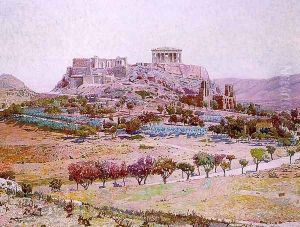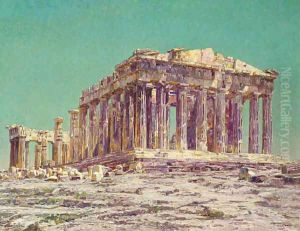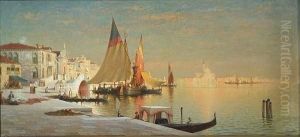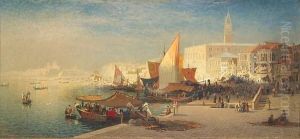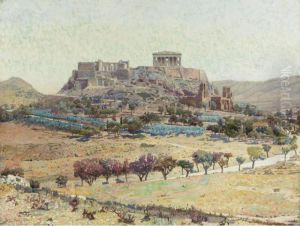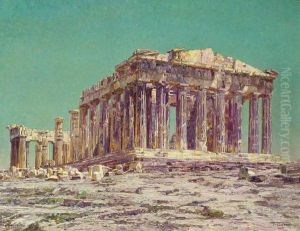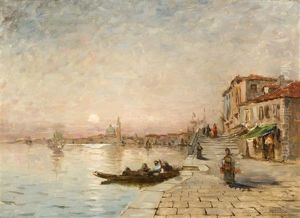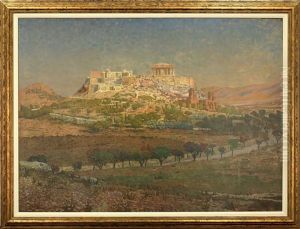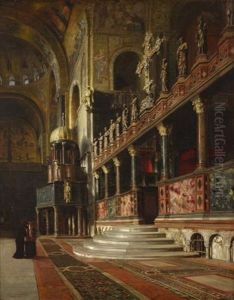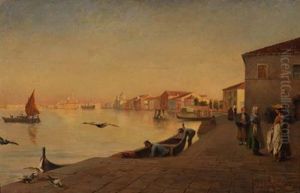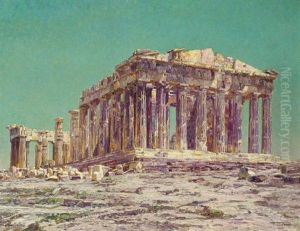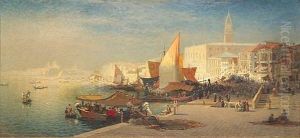Charles Gifford Dyer Paintings
Charles Gifford Dyer was an American artist, born in 1831 in Boston, Massachusetts. His journey into the world of art began at a young age, influenced by the rich cultural environment of Boston, which was a significant center for American art and literature during the 19th century. Dyer, primarily known for his landscape paintings, captured the essence of the American Northeast and its natural beauty. His works often depicted serene scenes of the countryside, coastal areas, and the rugged landscapes of New England, resonating with the transcendentalist movement that was prominent during his time.
Dyer's artistic education and development were largely shaped by the prevailing trends of his era, including the Hudson River School, known for its romantic portrayal of America's landscapes. While it is not documented that he formally studied under any of the prominent artists of this movement, his works exhibit a clear influence from this school, showcasing a similar appreciation for nature and a meticulous attention to detail. Throughout his career, Dyer exhibited his work in various galleries and exhibitions, gradually gaining recognition and appreciation among art collectors and the public.
Despite his contributions to American landscape painting, Charles Gifford Dyer did not gain the same level of fame as some of his contemporaries. However, his paintings remain valued by collectors and historians for their beauty and historical significance, offering insights into America's natural environments of the 19th century. Dyer continued to paint and exhibit his works until his later years, remaining dedicated to his artistic vision. He passed away in 1912, leaving behind a legacy as a talented landscape artist who captured the serene and majestic qualities of the American landscape. His works are preserved in various art collections and museums, serving as a testament to his skill and passion for the natural world.
